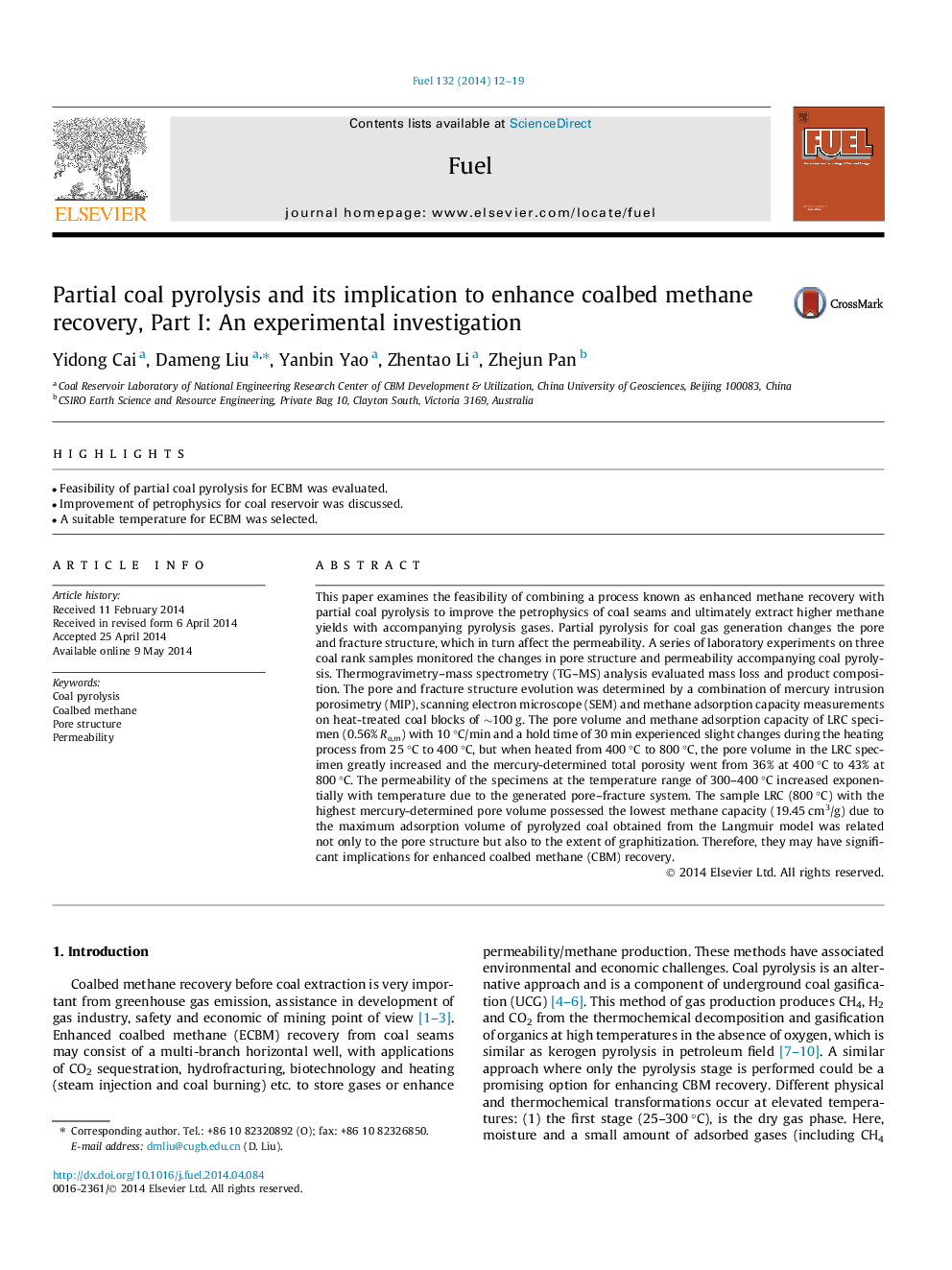| Article ID | Journal | Published Year | Pages | File Type |
|---|---|---|---|---|
| 206184 | Fuel | 2014 | 8 Pages |
•Feasibility of partial coal pyrolysis for ECBM was evaluated.•Improvement of petrophysics for coal reservoir was discussed.•A suitable temperature for ECBM was selected.
This paper examines the feasibility of combining a process known as enhanced methane recovery with partial coal pyrolysis to improve the petrophysics of coal seams and ultimately extract higher methane yields with accompanying pyrolysis gases. Partial pyrolysis for coal gas generation changes the pore and fracture structure, which in turn affect the permeability. A series of laboratory experiments on three coal rank samples monitored the changes in pore structure and permeability accompanying coal pyrolysis. Thermogravimetry–mass spectrometry (TG–MS) analysis evaluated mass loss and product composition. The pore and fracture structure evolution was determined by a combination of mercury intrusion porosimetry (MIP), scanning electron microscope (SEM) and methane adsorption capacity measurements on heat-treated coal blocks of ∼100 g. The pore volume and methane adsorption capacity of LRC specimen (0.56% Ro,m) with 10 °C/min and a hold time of 30 min experienced slight changes during the heating process from 25 °C to 400 °C, but when heated from 400 °C to 800 °C, the pore volume in the LRC specimen greatly increased and the mercury-determined total porosity went from 36% at 400 °C to 43% at 800 °C. The permeability of the specimens at the temperature range of 300–400 °C increased exponentially with temperature due to the generated pore–fracture system. The sample LRC (800 °C) with the highest mercury-determined pore volume possessed the lowest methane capacity (19.45 cm3/g) due to the maximum adsorption volume of pyrolyzed coal obtained from the Langmuir model was related not only to the pore structure but also to the extent of graphitization. Therefore, they may have significant implications for enhanced coalbed methane (CBM) recovery.
